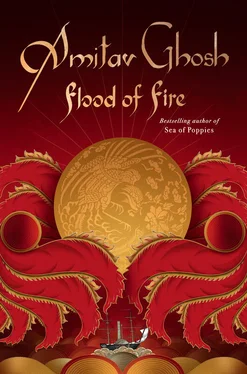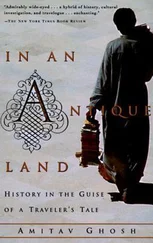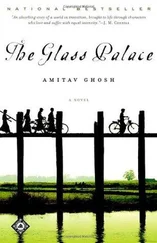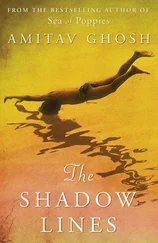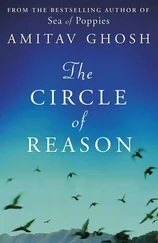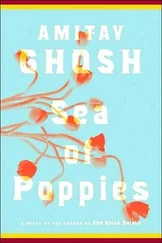The barracks that had been allotted to the Bengal Volunteers were in a secluded corner of the fort. Only a small part of the building had been set aside for them since their unit was to be a ‘battalion’ only in name. Even at full strength their numbers would be less than half that of a regular paltan: it would consist of two companies, each of about a hundred men.
That the unit would be a small one was welcome news to Kesri: he had expected to have jemadars, and perhaps even a subedar, sitting on top of him, poking their noses into everything. He was delighted to find that he was to be the highest ranking NCO in B Company. Equally pleasing was the discovery that the commander of the battalion, one Major Bolton, was a kind of supernumerary officer who was likely to be appointed to the staff of the expedition’s commanding officer. This meant that the battalion’s two companies would effectively function as independent units, which was exactly as Kesri would have wished it to be, since it meant that he and Captain Mee would be left largely to themselves in dealing with their men. There was of course the minor matter of some half-dozen subalterns to consider, but Kesri did not doubt that Captain Mee would be able to keep these young English officers from making nuisances of themselves.
It turned out that Captain Mee’s counterpart, the commander of A Company, was not a particularly energetic or forceful officer. The advantages of this became obvious when it came time to pick out the junior NCOs: with Captain Mee’s help, Kesri was able to get exactly the men he wanted as his naiks and lance-naiks.
When the first groups of rank-and-file sepoys began to trickle in, they too exceeded Kesri’s expectations. He knew from experience that soldiers who were allowed to ‘volunteer’ for overseas service were often rejects of one sort or another — misfits, shirkers, layabouts and drunks — men that any unit would be glad to get rid of. But these balamteers were not quite as bad as Kesri had feared: many of them were ambitious young jawans who wanted to see the world and get ahead, just as he once had himself, many years before.
Still, there was no getting around the fact that the volunteers were young and inexperienced soldiers, drawn from regiments of uneven standard. Kesri knew that it would be no easy task to mould this rag-tag bunch into a coherent fighting unit.
But once drills began in earnest, Kesri discovered that there were some advantages to working with a motley crowd of bala-mteers: since these men were not related to each other, as in a regular sepoy battalion, there were no meddlesome cousins and uncles to be taken into account. They could be harassed, ghabraoed and punished at will, without having to answer to their relatives. It was exhilarating to taste the power that came with this — it was as if Kesri had become a zamindar and a subedar all at once.
In the past Kesri had often been awed by the iron discipline of European regiments. He had wondered what it was that enabled their NCOs to mould their men into machines. He understood now that the first step in building units of that kind was to strip the men of their links to the world beyond. In the regular Bengal Native Infantry it was impossible to do this; the ties between the men and their communities were just too strong.
It was a help also that here they were all living in unfamiliar conditions. None of the sepoys had ever been quartered in barracks before, and Kesri was much struck by the difference. He himself was now sharing a room with four naiks, and within a week he felt he knew them better than he had ever known his subordinates. They were from different places — Awadh, Mithila, Bhojpur and the mountains — and of different castes as well: Brahmin, Rajput, Aheer, Kurmi and a few others. At the start some of them grumbled about eating together, but Kesri was quick to dhamkao the complaints out of them. Didn’t they know that they would have to travel on transport ships? Didn’t they understand that on ships it was impossible to carry on as if they were back in a village? And so on. It wasn’t long before they forgot about their complaints and this had a salutary effect also on the jawans, who became much more amenable to messing together when they saw that the NCOs were doing it too.
For a while things went better than Kesri had expected but he knew it wouldn’t last — and indeed it didn’t. Soon enough, the enforced isolation began to take a toll. The men were unused to being cooped up in a place where they had no access to the varied amenities of a camp-followers’ bazar. Living with strangers, in barracks’ rooms, and being constantly in uniform made them uneasy as well.
Matters took a turn for the worse when the second lot of bala-mteers was sent in, to make up the company’s numbers. Almost to a man they were ‘undesirables’, who had been induced to volunteer because their parent units wanted to be rid of them — either because they were physically unfit or because they were incorrigible troublemakers.
Soon nerves began to fray and since there were no cousins and uncles around to intervene before quarrels got out of hand, petty disagreements frequently escalated into fights. On two successive weeks a man was stabbed to death, which meant that the company lost a total of nine men altogether, because the killers’ accomplices had to be dismissed as well.
As the weeks went by Kesri began to see more and more signs of faltering morale: dishevelled uniforms, disorderly drills and many instances of mute, mulish insubordination of the kind that could not be remedied with ordinary punishments. To keep the men in hand became a constant struggle: for the first time in his career Kesri began to regret that flogging had been abolished in the Bengal Native Infantry.
At length Kesri hit upon the idea of setting up a wrestling pit. This was a common feature in the sepoy lines of military depots and cantonments, many of which organized regular tournaments, within and between battalions. Kesri had himself continued to wrestle throughout his military career; for a few years he had even reigned as the champion of the Pacheesi. He knew that the sport helped to strengthen bonds within units and his youthful memories of the akhara told him that it was especially likely to do so in a situation where the participants were strangers to each other. He did not expect that Captain Mee would object — he was one of the few British officers who himself entered the pit from time to time — and he was right. The captain declared the project to be a whizzing idea and obtained the necessary permissions within a week.
To dig a more or less satisfactory pit took only a day or two, and then Kesri himself took on the role of guru for the first volunteers. The effect was exactly as he had hoped: the men joined in enthusiastically, glad of the distraction, and there was a sudden rise in spirits. Soon the whole company was seized by a wrestling mustee and each platoon began to field teams to compete against each other.
Despite these heartening signs, one basic problem remained unchanged, which was that the volunteers still had no idea where they were going. This gave rise to all kinds of unsettling rumours: they would have to fight savages who ate human flesh; they were to be sent into a waterless desert; and so on. To combat the speculation Kesri began to talk to the NCOs about what seemed to him like possible destinations: Lanka, Java, Singapore, Bencoolen and Prince of Wales Island in Malaya. Sepoys had campaigned in all of these theatres and Kesri had heard innumerable stories about them from his seniors. But when Maha-Chin — China — cropped up he derided the suggestion: who had ever heard of sepoys going to China? That country lay far afield of the ring of territories where sepoys had been deployed in the past. The very name Maha-Chin suggested a realm that was unfathomably remote: what little he knew of it came from wandering pirs and sadhus who spoke of crossing snow-clad mountains and freezing deserts. The idea of a seaborne campaign being launched against that land seemed utterly absurd.
Читать дальше
